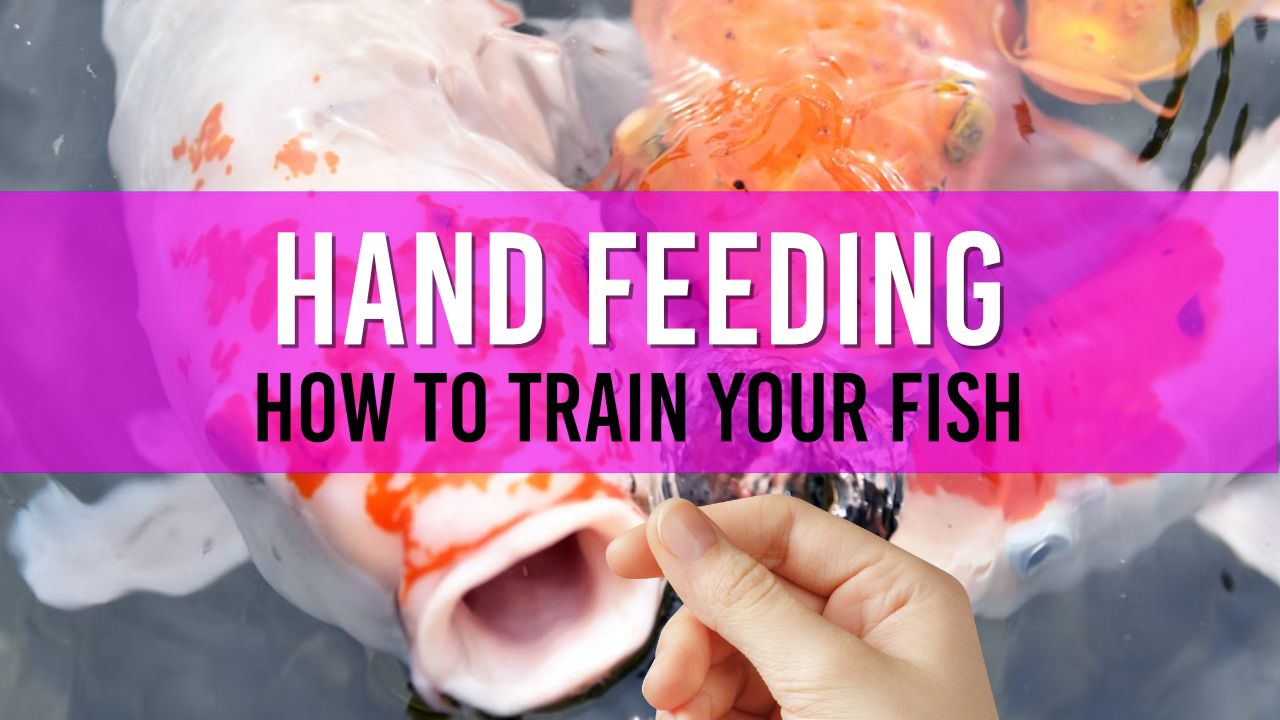How to train your Fish to feed from your hand
Patience is key when training fish to feed from your hand. Combine this with high-quality food to pique their interest, and adhere to a consistent feeding schedule. Over time, this combination will build trust and a bond between you and your pond fish.

Table of Contents
Ah, there's nothing quite like the joy of sitting by your pond, feeling the gentle splash of water and the soft nibble of a fish feeding right from your hand! It's a sort of dance between human and nature, isn’t it? Like sunflowers bending toward sunlight or the satisfying sight of clear water due to a good UV lamp.
For someone who's been knee-deep in ponds for years (quite literally sometimes), I've found some tricks to help you and your fish share this close connection. So, grab your wellies and let's jump right in!
Step-by-Step Quick Guide
- Regular Feeding Time: Stick to a regular feeding schedule. The more predictable, the better.
- Be Present: Spend time by your pond. Let fish get accustomed to your presence.
- Choose Quality Food: Invest in high-quality fish food and occasional treats.
- Patience: Don't rush it. Let the bolder fish take the lead.
- Spruce Up Their Home: Introduce new pond plants or upgrade equipment like pumps to keep the environment stimulating.
Why the Feeding Fandango?
Just as plants lean towards the light, fish, with a little patience, can lean towards trust. A fish feeding from your hand isn't just about showing off to your neighbours (though that’s a bonus). It’s about building trust and understanding with your aquatic mates. I've had countless hours of pondering and watching fish behaviours, and PondAnswers.com has been a dear companion on this journey.
Know When the Time’s Right

Remember the moment when you're famished, and any food in sight seems inviting? Fish are much the same. The key is catching them when they're peckish. Stick to a regular feeding routine so they can expect when it’s grub time. The routine helps them feel secure and they are more likely to venture to the surface.
Get Down to Their Level
Don't be afraid to get a bit muddy. Sit or kneel by the pond’s edge, and let your fish see you as part of the scenery. This also gives you a chance to check on your pond liner and see if it needs a clean or mend.
The Right Nosh

Now, fish can be picky eaters, just like some of us! Offering them high-quality fish food will pique their interest. Let's not forget the temptation of occasional treats. Worms or insects can work wonders. But ensure the food is safe and doesn't introduce pests into your pond.
Patience is a Pond-owner’s Virtue
You might find your fish are a bit shy at first. That's alright. Let them get used to your presence. Gradually, as days turn into weeks, you'll notice the bolder ones venturing out. They set the stage for the others. It’s like planting a new garden bed – you don’t expect blooms overnight, do you?
They devised a plan using a scarecrow - which they placed in the water holding a stick. They left the scarecrow there for 2 days and continued to feed the fish in and around the area.
After 2 days, the scarecrow was removed, and one of the Anglers took its place.
The fish were so used to seeing a figure in the water, they had no problems swimming up and around the Angler.
Which Fish are More Likely to Feed from My Hands?
When it comes to UK ponds, certain fish are naturally more predisposed to hand-feeding due to their curious nature and adaptability to the environment. Here are some of the most likely pond fish candidates in the UK:
Koi Carp

Probably the most famous and sociable of pond fish, Koi are known for their playful behaviour. With consistent training, they quickly learn to associate their caregivers with food and can be trained to feed directly from your hand.
Goldfish

Goldfish varieties, such as the common goldfish, comet, and shubunkin, are popular in UK ponds. With patience, they can be conditioned to accept hand-feeding, making them a delightful addition to interactive ponds.
Orfe (Ide)

The golden orfe or leuciscus idus are not just attractive but also sociable fish. They're swift swimmers but with time can be coaxed to come to the surface and feed from your hand.
Tench

While Tench can be a bit reserved, their natural curiosity can be tapped into. With the right approach, they can become more interactive and feed from hands, especially during warmer months when they're more active.
Sturgeon

Though not as common in smaller ponds, if you have a larger pond, Sturgeons can be an exciting addition. They are bottom feeders by nature, but with consistency, they can be trained to rise to the surface for feeding times (their little white noses often are susceptible to the odd 'boop')
While these species are more prone to hand-feeding, remember that individual personalities play a role. Some fish may take to hand-feeding more quickly, while others might need extra time. The key is patience, understanding, and a genuine love for your aquatic friends. Before you know it, you'll enjoy the magic of fish eagerly awaiting your hand in the pond!
How Long Do I Keep My Hands in the Water?
When training your fish to feed from your hands, patience is the name of the game. If you're wondering about the magic number for how long you should keep your hand submerged, offering food, there's no one-size-fits-all answer. But here's a guide to help you navigate this process:
- First Encounters: Initially, fish might be wary. During your first few attempts, you might need to keep your hand submerged for up to 10-15 minutes, allowing the fish to get used to the presence of your hand.
- Building Trust: As days go by and the fish start recognizing your hand as the source of food, the time they take to approach will decrease. They might start coming up in about 5-10 minutes.
- When They're Familiar: Once your fish have become accustomed to the routine and have built trust, they'll often approach within a couple of minutes.
- Key Tip: Always move slowly and deliberately. Sudden movements can spook them, and you might find yourself back at square one. If, after 15 minutes, there's no interest, it's okay to retract your hand and try again another day.
- Pay Attention to Their Behaviour: There will be times when they're just not in the mood, and that's okay. Learning to read their behaviour is essential. If they seem agitated or stressed, give them space and try again later.
Remember, every fish has its personality. While some might quickly catch on and approach within minutes, others might take their sweet time. The key is consistency, patience, and understanding. Before you know it, you'll have them eating right out of your hand (pun intended... I'll get my coat!)!
Wrapping it Up
Before you know it, with a splash of patience and a sprinkle of care, your fish will be queuing up for their turn to feed from your hand. It's a bond like no other.
There is nothing more satisfying than hand feeding your fish, and even though I've only touched on a couple of different species, if you have the right food, patience and a steady hand - you'll be on your way very very shortly!

